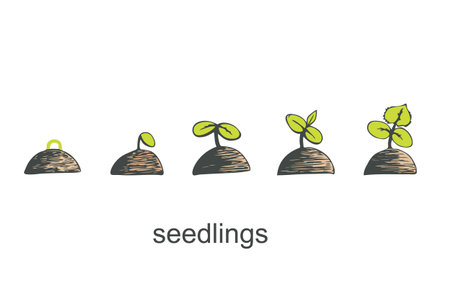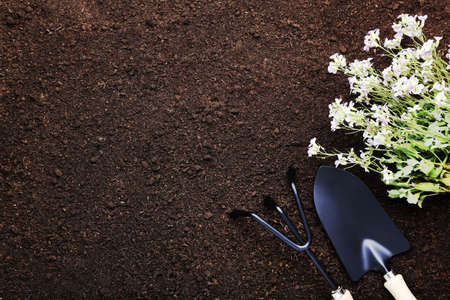1. Understanding the Unique Challenges of Terraced Gardens
Terraced gardens are a common sight across the UK, particularly in urban and suburban areas where Victorian and Edwardian terraced houses line the streets. While these gardens often exude charm and character, they come with their own set of unique challenges for homeowners looking to make the most of limited outdoor space. One of the primary issues is size—many terraced gardens are narrow and compact, leaving little room for traditional landscaping features or expansive lawns. Privacy is another concern, as close proximity to neighbouring properties can make it difficult to enjoy your garden without feeling overlooked. Additionally, uneven ground or sloped terrain is typical in these plots, which can complicate planting and seating arrangements. Recognising and understanding these common challenges is the first step towards creating a functional and beautiful small terraced garden that truly maximises every inch available.
2. Optimising Layouts for Maximum Impact
When it comes to small terraced gardens in the UK, making every inch count is essential. Clever layouts transform compact spaces into practical and beautiful outdoor rooms. Here’s how zoning, multi-level designs, and thoughtful flow can help you maximise your garden’s potential.
Zoning: Define Your Spaces
Dividing your garden into zones helps create order and purpose. Each area can serve a different function—dining, relaxing, or growing herbs—making the space feel larger and more organised.
| Zone | Purpose | Design Tips |
|---|---|---|
| Seating Area | Relaxation & Socialising | Add a bench or bistro set; use outdoor rugs to define space |
| Planting Beds | Flowers & Veggies | Use raised beds or pots for easy access and neat lines |
| Dining Corner | Al Fresco Meals | Foldable tables save space; choose slimline furniture for narrow spots |
| Utility Zone | Storage & Bins | Screen off with trellis or tall planters to keep things tidy |
Multi-Level Designs: Add Depth and Interest
If your terrace has a slope—or even if it doesn’t—using different levels adds depth and makes the garden feel more spacious. Raised decks, sunken patios, or tiered planting areas break up flatness and create visual intrigue.
Ideas for Multi-Level Layouts:
- Steps: Use stone or timber steps to move between levels, adding character and flow.
- Terraced Planting: Retaining walls with built-in beds make slopes usable and attractive.
- Decked Platforms: Create a seating platform at one end for evening drinks or morning coffee.
Create Flow: Easy Movement from Indoors Out
The way you move through your garden matters. Paths and open sightlines make small spaces feel bigger and more inviting. Keep routes clear with stepping stones or gravel paths. Align main features—like seating areas or focal plants—to draw the eye from indoors outwards, blending home and garden seamlessly.
Top Tip:
Avoid cluttering pathways with pots or furniture. Instead, tuck storage under benches or use wall-mounted planters to keep floor space open.

3. Incorporating Vertical Elements and Greenery
Making the most of a small terraced garden in the UK often means thinking upwards. By cleverly incorporating vertical elements, you can introduce layers of lushness and interest without sacrificing precious ground space. One effective approach is to use climbing plants such as clematis, honeysuckle, or classic English ivy. These varieties thrive in the British climate and add both colour and texture when trained up fences, walls, or pergolas.
Living Walls for Modern Appeal
Living walls are an increasingly popular feature in compact outdoor spaces. These vertical gardens can be created with modular planting systems or simple wall-mounted pockets filled with hardy ferns, herbs, or trailing flowers. Not only do they soften hard surfaces and boost biodiversity, but living walls also help improve air quality and provide insulation against urban noise—a real bonus for city dwellers.
Trellises: Traditional Meets Practical
Trellises are a classic solution for terraced gardens. Fixed to brick walls or used as freestanding screens, they support flowering climbers like roses or sweet peas while offering privacy from neighbours. Painted wooden trellises can also be tailored to match your home’s exterior, blending beauty with functionality.
Maximising Every Inch
Don’t overlook opportunities to hang planters or attach shelves at different heights on fences and shed walls. By layering greenery vertically, you create depth and a sense of abundance even in the smallest plot. This thoughtful use of vertical space makes your garden feel much larger, more inviting, and distinctly British in style.
4. Choosing Compact and Functional Outdoor Furniture
Making the most of a small terraced garden in the UK means being smart with your furniture choices. Opting for compact and functional outdoor furniture is key to maximising space without compromising comfort or style. Look for pieces that are designed specifically for small areas, such as foldaway seating, stackable chairs, and tables with built-in storage. These allow you to adapt your garden for different uses, from relaxing solo to entertaining friends, all while keeping your space clutter-free.
Weather-Resistant Materials for British Gardens
The unpredictable British weather means choosing durable materials is essential. Aluminium and powder-coated steel resist rust, while treated hardwoods like teak can withstand damp conditions. Fabrics should be water-resistant and quick-drying to cope with sudden showers.
Dual-Purpose Solutions
Multifunctional furniture helps maximise every inch. Consider benches with hidden storage for cushions or tools, or coffee tables that convert into dining tables. Below is a simple comparison of popular dual-purpose options for UK gardens:
| Furniture Type | Main Function | Secondary Use |
|---|---|---|
| Storage Bench | Seating | Garden Storage |
| Foldaway Bistro Set | Dining | Compact Storage |
| Coffee Table with Lid | Table Surface | Cushion/Tool Storage |
Space-Saving Arrangement Tips
- Choose round tables to improve flow in narrow spaces.
- Select armless chairs that tuck fully under tables.
- Use wall-mounted folding seats or shelves to free up floor area.
Selecting the right outdoor furniture ensures your terraced garden remains flexible, practical, and ready to enjoy in any season—rain or shine.
5. Integrating Traditional British Garden Features
Bringing the timeless charm of traditional British gardens into a small terraced space is not only possible, but can create a delightful blend of old and new. Start by embracing classic cottage planting schemes—think fragrant lavender, hardy geraniums, foxgloves, and roses. These plants provide colour and structure without overwhelming compact spaces. Place them in layered arrangements along borders or in raised beds to maximise ground area and add vertical interest.
Classic Brickwork with a Modern Twist
Brick paths and low walls are signature features in British gardens. In smaller plots, use reclaimed bricks to create narrow winding paths or as edging for flowerbeds. This adds character while maintaining neat divisions between zones. For even more versatility, opt for herringbone or basket weave patterns, which look visually appealing and help define areas without cluttering your layout.
Decorative Pots and Planters
No British garden is complete without pots brimming with seasonal blooms. Choose traditional terracotta or stone containers, but arrange them in clusters at different heights for a contemporary look. Place these on steps, window sills, or atop brick pillars to make use of every inch of space. Herbs like thyme, mint, or chives grow well in pots and provide both beauty and utility.
Blending Old and New
The key to integrating traditional features is balance. Pair rustic elements with modern materials like sleek steel or painted timber furniture. Use mirrors or glass panels on boundaries to reflect greenery and give the illusion of more space. By weaving together classic British touches with practical design solutions, you can enjoy the best of both worlds—heritage charm within a modern, space-saving layout.
6. Enhancing Privacy and Cosiness
Making a small terraced garden feel private and inviting can be a challenge, especially when neighbours are close by. However, with thoughtful design choices, you can transform your outdoor space into a secluded retreat.
Tips for Screening
Start by adding vertical elements to break up sightlines. Trellis panels or slatted wooden screens are popular in the UK for their classic appearance and ability to support climbing plants. Choose designs that allow some light through, so your garden doesn’t feel boxed in. Position screens at seating areas or along property boundaries for maximum effect.
Subtle Fencing Solutions
Instead of solid fencing, consider subtle options such as willow hurdles or hazel panels. These natural materials blend beautifully with greenery and provide a softer look than standard timber fences. Low picket fences can also offer structure without feeling overpowering, particularly in narrow spaces typical of terraced gardens.
Creative Planting for Seclusion
Planting is key to creating both privacy and atmosphere. Layer evergreen shrubs like laurel or Portuguese laurel at the back for year-round screening. In front, add ornamental grasses or flowering perennials such as lavender and salvia for colour and movement. Tall planters with bamboo or pleached trees work well where ground space is limited, giving height without taking up too much room.
Welcoming Touches
To enhance cosiness, incorporate soft furnishings like outdoor cushions and throws on benches or chairs. Add warm lighting—string lights or solar lanterns—to create an inviting glow in the evenings. These finishing touches will help make your compact garden feel like a secluded haven right outside your door.
7. Low-Maintenance Ideas for Busy Urban Life
For many city dwellers in the UK, finding time for garden upkeep can be a challenge. That’s why creating a low-maintenance terraced garden is so appealing. Start by choosing practical designs that require minimal effort. Raised beds and defined borders keep spaces tidy and manageable, while gravel or paving reduces the need for frequent lawn care. Opt for hardy, evergreen plants such as lavender, boxwood, or ornamental grasses—they thrive in the UK’s unpredictable weather and need little attention.
Clever storage solutions are essential in small gardens. Consider installing compact sheds, wall-mounted shelves, or built-in benches with hidden storage underneath. These ideas help you keep tools and supplies out of sight but close at hand, maximising every inch of space.
Self-watering containers, mulch to retain moisture, and drought-tolerant plants like sedum or rosemary further reduce maintenance needs. Choose materials and finishes that weather well, such as galvanised steel planters or treated timber, ensuring your garden looks good year-round with minimal intervention.
By making smart design choices and selecting robust features tailored to British conditions, even the busiest urban gardeners can enjoy a stylish, practical outdoor retreat without the hassle.


